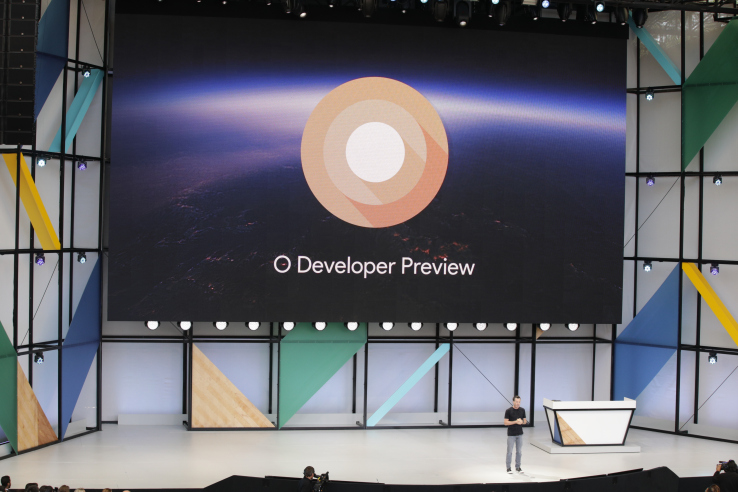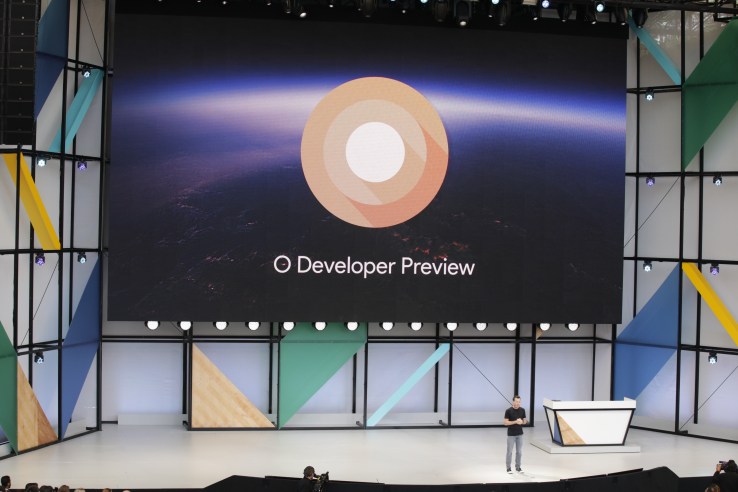

It’s already been available for a few months as a developer preview, but now the rest of us can finally get our hands on an upcoming version of Android. Android O Beta starts shipping today, if you point your browser over to android.com/beta.
The company used the opportunity to show a number of features that have already been available in the developer preview. Notifications have gotten number of key updates, including the addition of Notification Dots – a little circle that sits in the corner of an app icon, letting users know that specific app has a new note tied to it. Giving it a long press, will pop up a preview window, similar to iOS, so users never have to leave the desktop to view.
Autofill is pretty much exactly what you think it is, with the company guess at what you’re trying to say while your typing, using context like user names, much as it does in the desktop-based browser. Smart Text Selection, meanwhile, spots things like business names and addresses from around the web, highlight the whole segment, to help avoid awkwardly highlighting and unhighlighting text, piece by piece.
Picture in Picture was already announced, but not available in the dev preview. The feature essentially place a small video box on the desktop, while other apps are open. That way you can, say, watch a YouTube or Netflix video or do a Duo chat, while sending an email. Assuming, of course, your screen is big enough and you’ve got enough processing power.
The new version of the operating system is also set to bring some advantages on the hardware front, according to the company, including, notably, an increase in boot times, which should fire up the handset in around half the time.
Also new is Vitals, a new feature available for Play that helps developers spot issues with apps that can potentially impact phone security, battery life and the like. The biggest cheer of the day from the developer-heavy crowd, on the other hand, came when the company announced Android support for the Kotlin programming language (nerds).
O adds some nice touches to the Android experience, though nothing quite revolution, making it a fairly minor upgrade in the grand scheme of things. Though the company is clearly doing a lot to help future proof the operating system by building out the backend with a number of new developer tools.
Also worth noting is the fact that Android on a whole just crossed the two billion monthly active device threshold, in case you had any doubt as far as the ubiquity of the company’s mobile operating system. Of course, fragmentation is still a very real issue with the OS at present.
After all, Nougat, which officially launched in August of last year, is only currently deployed on around seven-percent of devices, well below the 31 and 32-percent that Marshmallow and Lollipop currently command.
As far as what this version will actually be called (coughOreo*cough), we’re still waiting on the official unveil.

